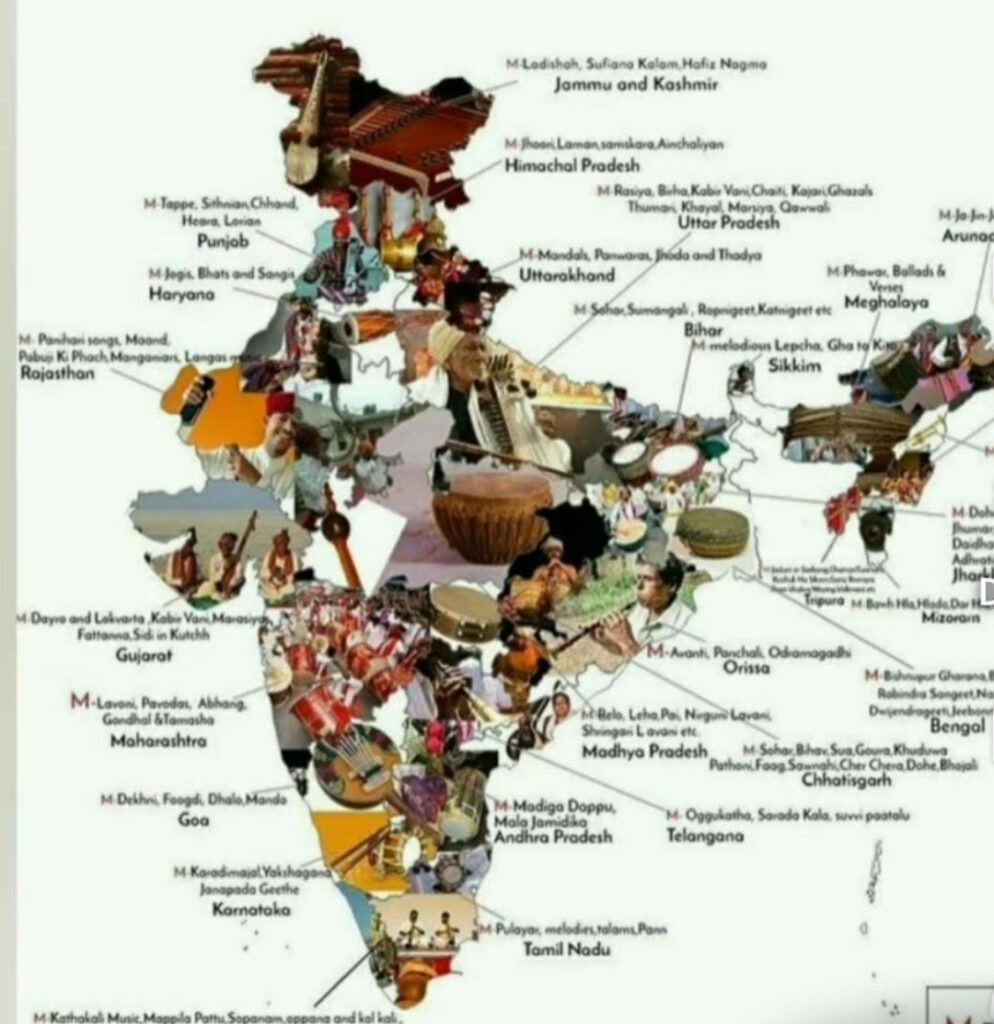
When Faith Becomes a Flash Point: The Dangers of Assertive Religion in Secular India
India is a tapestry woven with myriad religions, languages, castes, and cultures. Secularism—enshrined in the Constitution—was meant to guard this diversity and ensure equal status for all faiths. Yet in recent years, assertive religiosity—expressed through processions, slogans, loudspeakers, and public display—has become a trigger for communal tension rather than coexistence. The flare-ups around slogans like “Jai Shri Ram,” “Har Har Mahadev,” “Jai Bajrang Bali” and “Allahu Akbar,” “I Love Muhammad” reflect deeper societal strains. Unless checked, such practices threaten India’s secular social fabric. This column explores how, why, and what might be done.
A Case in Point: “I Love Muhammad” in Kanpur
On September 4th–5th in Rawatpur, Kanpur, members of the Muslim community erected a signboard reading “I Love Mohammad” during the Barafath (or Bara-Wafat) lighting ceremony. The very next day, local Hindu residents protested, claiming that this was a new tradition and that such signage near mosques or mixed neighbourhoods provoked the existing peace. Slogans and banners were torn, exchanges of slogans occurred, police intervened, and ultimately an FIR was registered against multiple individuals. 
While no one disputes religious devotion, what this and many other incidents show is how public religious expression—especially when novel or perceived as provocative—quickly becomes contested. What begins as a devotional act can escalate into a communal confrontation, feeding mistrust and sometimes violence.
Slogans as War Cries: More Than Mere Words
*Chants with a history*
Slogans are not neutral. “Jai Shri Ram,” for instance, has often functioned beyond a religious greeting. During the Ayodhya movement of the 1980s-’90s, during the demolition of the Babri Masjid in 1992, and later in riots in Gujarat in 2002, the slogan was used aggressively.
It was shouted from political platforms, procession routes, even forced upon people of other faiths. 
There are recent incidents too: a Muslim man lynched after being forced to chant “Jai Shri Ram” in Jharkhand in 2019.  Or a man in Mathura coerced into chanting the slogan by a group, which was recorded and shared socially; arrested suspects followed. 
And in Aligarh, a mosque teacher was attacked, asked to “go to Pakistan” for refusing to chant “Jai Shri Ram.” 
Parallel provocations
On the other side, Muslim slogans or placards such as “Allahu Akbar” or “I Love Muhammad” become flashpoints when displayed prominently, especially in mixed or public religious spaces, or perceived as encroaching upon others’ religious domains. The Kanpur case above shows that even non-violent, devotional slogans among Muslims are sometimes viewed as provocations and will draw reaction. The issue is not just the slogan, but the setting—context, timing, perceived intent.
Loudspeakers: Amplifiers of Faith and Friction
Religious festivals often involve processions or public rituals, often accompanied by loudspeakers blasting devotional chants, sermons or religious songs. These are part of the lived culture of many faiths. But when the volume, timing, location overlap with other religious places of worship—or when they coincide with non-religious neighbourhood hours—they become a cause of grievance. The grievance isn’t merely noise. It’s also symbolic—asserting visibility, dominance, religious presence in contested urban spaces.
The Pattern and Its Perils
*Communal Polarisation*: Slogans and processions can harden identities (“us” vs “them”), particularly when one community feels its space or dignity is being encroached.
*Escalation to Violence*: What starts as verbal confrontations often spill into property damage, attacks, even loss of life—especially in tense borderzones or localities with mixed populations.
*Legal Ambiguity*: Courts struggle to balance free speech, religious freedom, and law and order. For example, the Supreme Court in December 2024 asked whether raising “Jai Shri Ram” inside a mosque could hurt religious sentiments and could be criminalized. The Karnataka High Court had quashed proceedings in such a case, but the matter returned to higher courts. 
*Erosion of Trust*: When people of minority faiths feel their religious expressions are policed or attacked, it feeds a sense of alienation; majority communities may feel under siege or unfairly criticised. Both are harmful to social peace.
*Political Instrumentalization*: Sloganeering, processions, loudspeakers are sometimes used as political tools—to signal power, mobilise bases, provoke or respond to voters—rather than purely devotional acts.
Legal and Constitutional Context
•*Freedom of Religion*:(Articles 25-28) permits individuals and communities to profess, practice, and propagate religion. Also, processions, use of public space, displays are implicit in that freedom, subject to law, public order, morality.
•*Freedom of Speech and Expression*:(Article 19) likewise protects speech, including religious speech, but again subject to reasonable restrictions.
•*Rule of Law & Public Order*: State has the power to restrain speech and actions that incite violence or threaten public peace (e.g., sections of the IPC that deal with criminal intimidation, hate speech, trespass). The law does not allow forcing someone to chant a slogan, or entering someone else’s place of worship to shout slogans.
Could a Blanket Ban Be the Solution?
While blanket bans on all public religious processions, slogans, or displays might superficially seem to level the playing field, they raise serious problems:
•It may violate constitutional guarantees of religious freedom and free speech.
•It may disproportionately affect smaller faiths or minority traditions, who often rely more on visible public expressions to mark identity.
•It could be seen as over-reaching, authoritarian, possibly even counterproductive—increasing resentment rather than reducing conflicts.
•Enforcement in a populous, diverse democracy like India is hugely difficult, and may itself become a source of conflict (which festivals are allowed, which processions are restricted, etc).
Turkish Model: Can Atatürk’s Secularism Be Replicated?
Mustafa Kemal Atatürk transformed Turkey in the early 20th century through radical reforms: abolishing the caliphate, banning the fez, making secular law supreme, replacing the Arabic script with Latin, suppressing outward religious symbols in state institutions, policing religious expression aggressively. 
But there are crucial differences:
•*Size and Diversity*: India’s scale in terms of religions (Hinduism, Islam, Christianity, Sikhism, Buddhism, etc.), linguistic diversity, ethnic plurality, and regional differences make uniform suppression of religious symbols or practices highly impractical and likely unjust.
•*Democratic Tradition*: Indian secularism has always been part of a functioning democracy, with constitutional protections, participatory politics, judiciary oversight. Turkish secularism under Atatürk was largely top-down, authoritarian in method. 
•*Embedded Religious Life*: In India, religious practice is deeply woven into culture, language, domestic life. Public religious expressions are part of many social and civic rituals—festivals, processions, rituals—and cannot be easily cordoned off.
Thus a wholesale adoption of the Turkish model (or French laïcité) would likely generate resistance, possibly more dysfunction.
What Can Be Done—Paths Forward
Here are possible approaches to reduce the risk posed by assertive religion while respecting constitutional freedoms:
*Clear legal norms and timely enforcement*: Laws exist against incitement to violence, hate speech, trespass, public nuisance. These need to be enforced impartially. Cases like slogans inside mosques or forced chanting should be investigated, not delayed. High Courts and Supreme Court interventions show such cases are grey—clearer precedents are needed.
*Regulation of processions and public religious display*: Local administration can regulate routes, timing, sound volume and proximity to sensitive religious sites. Permits for processions should require advance notice to police and communities, clear agreed conditions.
*Noise/decibel limits*: Loudspeaker usage especially at odd hours, especially near other worship places or residential areas, should follow norms. Enforcement of local municipality rules on noise pollution is essential, with penalties for violation.
*Dialogue between communities*: Interfaith forums, local community leaders, religious institutions should engage regularly, agree on “good neighbour” practices (e.g. no provocative slogans near the other’s place of worship, avoid processions through mixed localities without consent).
*Public awareness and civil society role*: Media, NGOs, educational institutions need to emphasise the constitutional vision of secularism, tolerance, equal dignity. Campaigns to remind citizens that religious freedom does not mean religious assertion at the cost of others’ freedoms.
*Judicial clarity*:
Courts should offer clearer jurisprudence on what constitutes “provocation”, “offensive utterance”, “hurt religious feeling”, “incitement to communal disharmony”. Distinctions should be drawn between devotional expression and aggressive slogans or threats.
*Political restraint*: Political parties and leaders should refrain from using religious slogans or communal settings for electoral advantage or posturing. Enforcement agencies should be insulated from politicisation when dealing with such issues.
Balancing Rights, Respect, and Reason
India’s secular Constitution grants every citizen the right to religion, expression, and faith. It also demands that these rights be exercised responsibly, with respect for others. Processions, chants, slogans, loudspeakers—these are all part of religious life. But when they are used as instruments of dominance, provocation, or aggression, they undermine social harmony.
A blanket ban might appear tempting to control discord, but it would contradict the spirit of religious freedom enshrined in our law. And models like that of Kemal Atatürk, while historically significant, are incompatible with India’s plural, democratic, and decentralised realities.
What India needs is not the suppression of religious expression, but the cultivation of restraint, respect, and mutual understanding—along with consistent, fair law enforcement. Only then can the ideal of “unity in diversity” survive—and flourish.
Hasnain Naqvi is a former member of the history faculty at St. Xavier’s College, Mumbai


